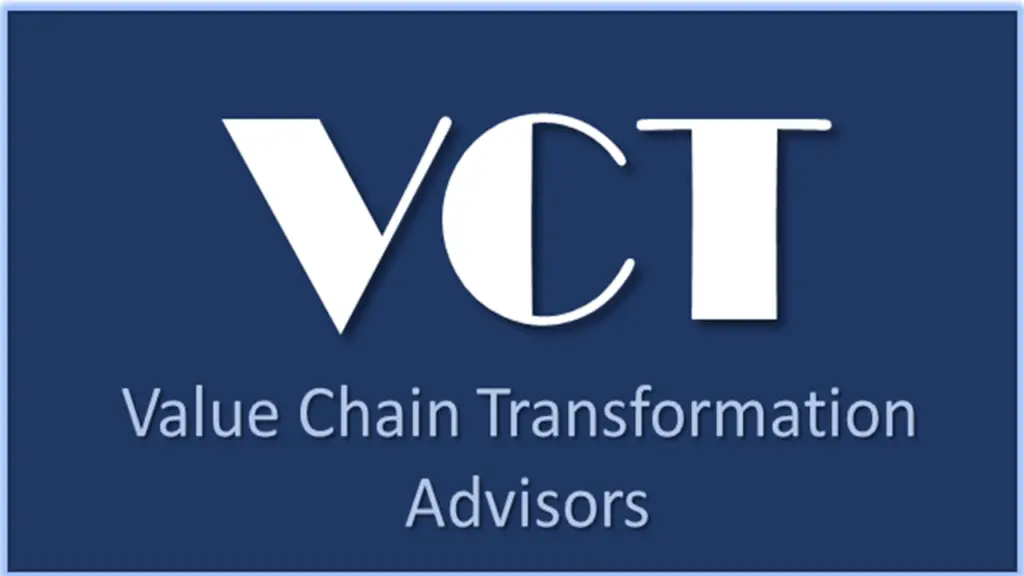Making supply chain decisions off the cuff or analyzing historical data using basic Excel spreadsheets no longer cuts it in today’s complex and interconnected supply chain networks. Instead, supply chain decision intelligence is the new and more reliable approach that your organization needs to expertly navigate the various complexities of modern supply chain networks.
Learn what supply chain decision intelligence is all about, its impact on modern organizations, and the key components that make it operational.
What Is Supply Chain Decision Intelligence?
Decision intelligence (DI) in the supply chain involves leveraging real-time data and advanced analytics to derive data-driven insights that inform decision-making. This way, you can make quick, accurate, and informed decisions about your supply chain. These decisions ultimately scale your business and boost your bottom line by optimizing various business aspects, including demand fulfillment and vendor management.
The quick evolution of decision-making in supply chains has made decision intelligence more applicable across all supply chain operations, from inventory sourcing and management to order delivery and product returns. By leveraging supply chain intelligence, executives and supply chain professionals can make data-informed, context-aware, and time-sensitive decisions that align with evolving business dynamics.
Supply chain decision intelligence is the outcome of analyzing past and existing supply chain operations data and then using predictive analytics to model and predict future trends and events. This helps companies make dynamic and versatile supply chain decisions that keep a company on a growth trajectory in all seasons.
Supply Chain Decision Intelligence vs. Traditional BI Tools
While busíness intelligence (BI) is the backbone of data-driven companies, decision intelligence transcends data-based insights and turns them into actionable and proactive business decisions. Companies can implement decision intelligence to achieve positive outcomes.
Where BI tools identify potential supply chain issues through data analysis, decision intelligence tools take it one step further, providing real-time solutions. BI is more descriptive, diagnostic, and backward-looking as it heavily relies on analyzing past data to derive insights.
On the other hand, DI takes a proactive approach and is more forward-thinking. Think of supply chain DI as a decision engineering platform that utilizes artificial intelligence (AI) and machine learning (ML) technologies to optimize and customize decisions in real-time.
Here’s a detailed comparison of business intelligence vs. decision intelligence.
| Features | Legacy Business Intelligence | Decision Intelligence |
| Speed | The decision velocity is slow because it involves manual processes. | Swift decision velocity because it integrates high-level automation. |
| Flexibility | Limited flexibility makes BI slow to adapt to business changes. | Highly customizable and flexible enough to quickly accommodate industry changes. |
| Outcomes | Provides raw insights that need additional processing to yield functional outcomes. | Provides data-driven insights that can be implemented in real-time. |
| Composability | Supports basic data integration and modular application development | Supports integration of sopshicticated technologies like AI models and advanced analytics. |
| Integration | Features complex integration, requiring heavy and regular IT support. | Great user experience (UX) design create user-friendly integration that requires minimum IT support. |
| Real-time adaptability | It takes time to adapt and implement BI insights as they need additional human intervention and planning. | DI insights are fine-tuned for quick and real-time implementation. |
| Automation | Most BI systems utilize basic automation technologies like Extract, transform, and load (ETL). | DI systems leverage sophisticated automation technologies like machine learning, business rule management systems, and AI. |
Why Decision Intelligence Is Critical Today?
Since the global supply chain disruptions triggered by the pandemic, more companies appreciate and apply decision intelligence in the supply chain to mitigate disruption effects. According to Statista, the peak of supply chain disruptions in 2021, during the post-pandemic period, cost organizations worldwide an average of $184 million.
And since today’s supply chain networks are more interconnected and dependent, disruptions cause much more financial and operational damage to businesses. For instance, the most recent US-imposed tariffs will cause substantial disruptions to both US-based companies and those outside.
In fact, a recent survey found that American-based organizations fear that the tariffs will affect 25% of their imports and exports. Companies outside the US fear that 20% of their US imports and over 20% of US-bound exports will be affected.
How Decision Intelligence Helps
The harsh truth is that you cannot wholly avoid supply disruptions, tariff barriers, or demand volatility, as they’re often triggered by external factors beyond your control. The key is how effectively you adjust to mitigate supply chain disruptions and sustain operational continuity. And that’s where decision intelligence saves the day.
DI empowers you to prepare for potential disruptions by utilizing predictive analytics that help you model possible scenarios and generate actionable outcomes. For instance, companies affected by the US-imposed tariffs are applying several mitigation strategies that include:
- 72% are switching sourcing patterns for new ones excluded by the tariffs.
- 67% are turning to tech solutions that help them re-engineer trade lanes and map supply chains to get the most cost-efficient routes.
- 52% are renegotiating their existing contracts with suppliers to get more favorable terms.
- 49% are applying inventory strategies, such as frontloading.
[https://www.thomsonreuters.com/en-us/posts/international-trade-and-supply-chain/2025-tariffs-survey/]
Additionally, due to the high integration flexibility of a DI system, companies that adopt it as a last-minute stopgap can achieve quick results without revamping their entire tech stack from scratch. Top decision engineering and orchestration solutions, like GAINS, allow users to make continuous incremental tweaks according to risk levels. Doing so facilitates smarter trade-offs, real-time scenario planning, and adaptive execution to fit different supply chain disruptions.
Key Components of Supply Chain Decision Intelligence
These are the main elements that enable supply chain DI work:
Real-Time Data Integration
Data is the lifeblood of DI systems. All DI processes start with data ingestion and integration from multiple internal and external sources. The DI system integrates structured and unstructured data sets into one uniform pool to facilitate detailed data analysis and enrichment.
Advanced Analytics
DI systems facilitate advanced data analytics, ranging from descriptive and diagnostic to predictive and prescriptive analytics. To derive insights within these four categories, DI leverages multiple analytical methods, including:
- Natural language processing (NLP), text mining, and text analytics
- Spatial analytics and geospatial analytics
- Segmentation analysis and cluster analysis
- Social network analysis
Artificial Intelligence & Machine Learning
DI systems leverage AI and ML models to interpret massive data sets, predict outcomes, and prescribe the best course of action. DI delivers insights into logistical optimization and streamlining, AI demand forecasting, operation scaling, and inventory management in supply chain applications.
Scenario Planning & Collaboration
Scenario planning is a reliable method for advancing supply chain risk intelligence preparedness. It’s possible thanks to predictive analytics that forecast future supply chain scenarios, solutions, and outcomes.
Scenario planning involves modeling risk scenarios that have the potential of happening in the future and testing various solutions in advance. It ensures you’re not caught off guard by future instances of supply chain disruptions, and that you’re already prepared with possible steps to take in response.
Real-World Use Case: Decision Intelligence Examples
Decision intelligence can be applied in many scenarios beyond supply chain optimization. Other use cases include:
- Financial risk assessment
- Customer service and relationship management
- Fulfilling regulatory compliance
- Manufacturing process improvement
- Human resource management
- Fraud detection
These are real companies that have successfully applied decision intelligence and elevated decision-making:
- Amazon: It’s no surprise that Amazon leads the list, as it has been a pioneer of AI business applications for years. Amazon applies decision intelligence to predict which products will have high demand in the future and optimize product placement in warehouses to enable quick order fulfillment.
- John Deere: The world’s leading manufacturer of farming and industrial machinery leverages AI, machine vision, and learning, to boost farming operations. A classic example is its See and Spray pesticide and herbicide distribution system, which automatically distinguishes unhealthy and healthy crops to facilitate precise dosing. This helps Deere achieve a remarkable reduction of 80-90% of pesticide use.
How to Implement Decision Intelligence in Your Supply Chain
You can implement DI in your supply chain operations at three levels:
- 1. Decision Support: The basic implementation level boosts human decision-making in the supply chain using primary data analysis and exploration techniques.
- 2. Decision Augmentation: This recommends data-backed supply chain solutions for human implementation and leverages predictive analytics to foretell future events and suggest appropriate solutions.
- 3. Decision Automation: Decision-making is entirely automated, all the way from data analysis to the final implementation steps.
GAINS: Enabling Smarter Decisions Across the Supply Chain
GAINS is a leading supply chain performance optimization company with years of combined experience. We know the ups and downs of implementing and streamlining decision intelligence across the entire supply chain, and we’re glad to help you get it done. Our first-in-class platform transcends traditional silos of ERP, supply chain planning, and network design, enabling integrated smarter, faster, and composable decisions from strategic design to order execution.
GAINS is the only composable supply chain decision-making platform that enables companies to optimize, adapt, and scale from design through planning — without costly system overhauls. Request a demo today and witness firsthand the magic of decision intelligence in optimizing your supply chain networks.



